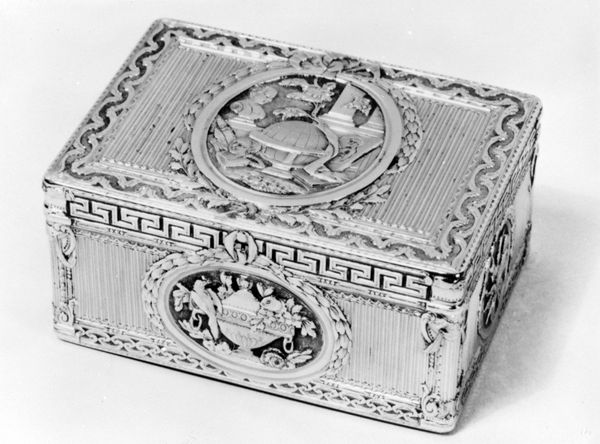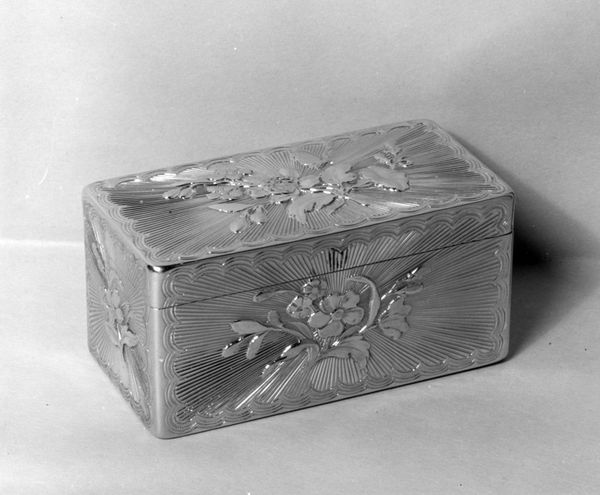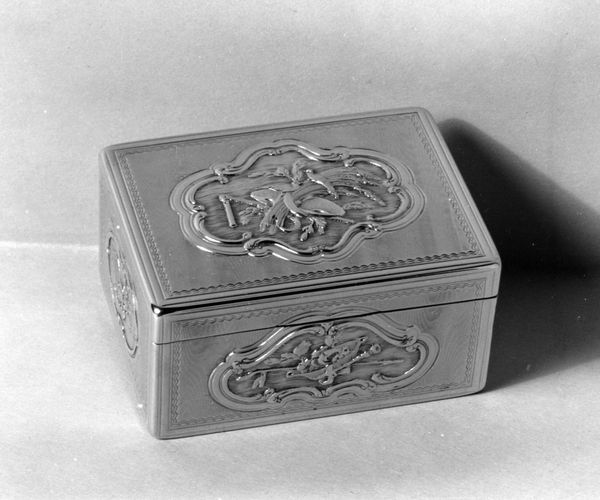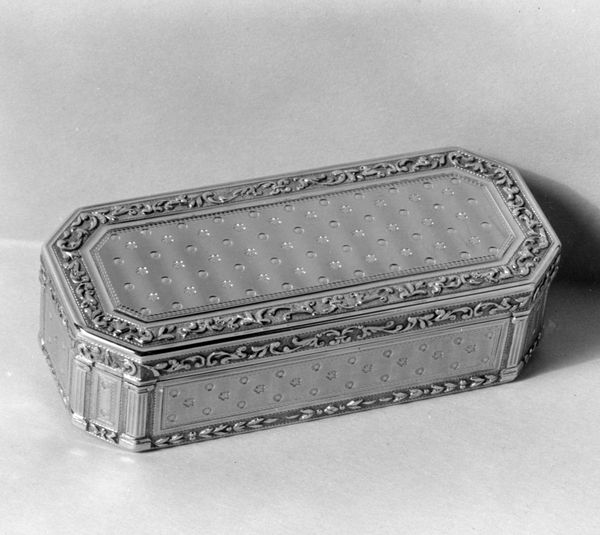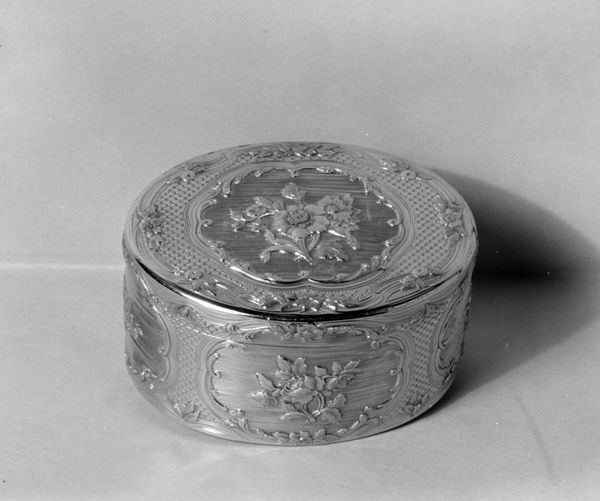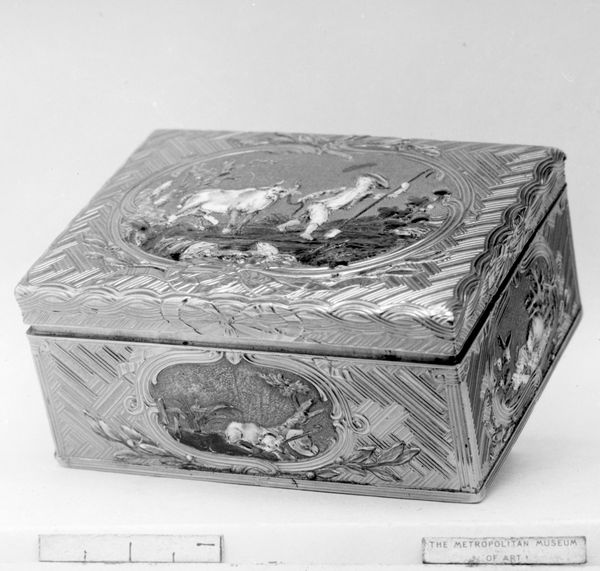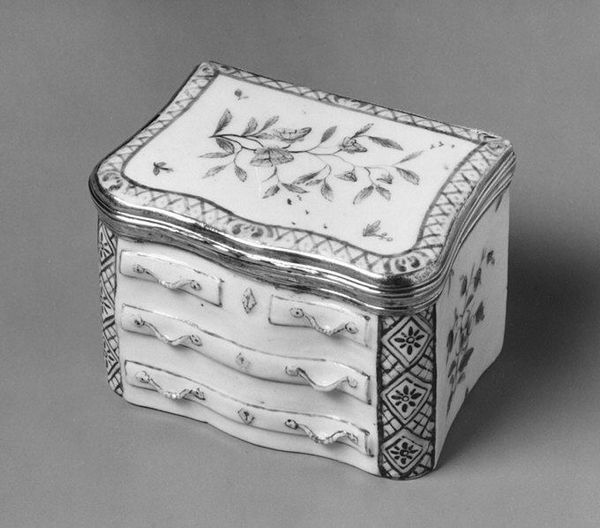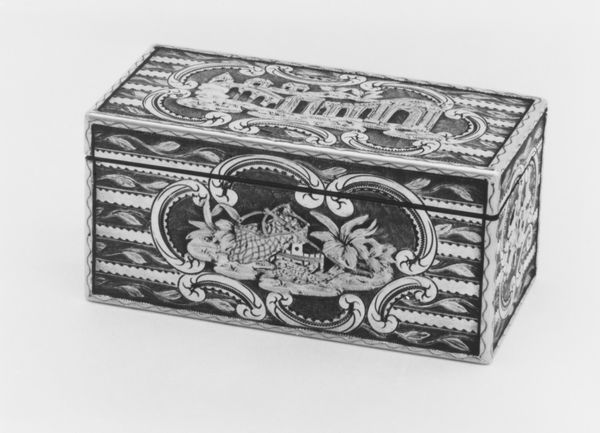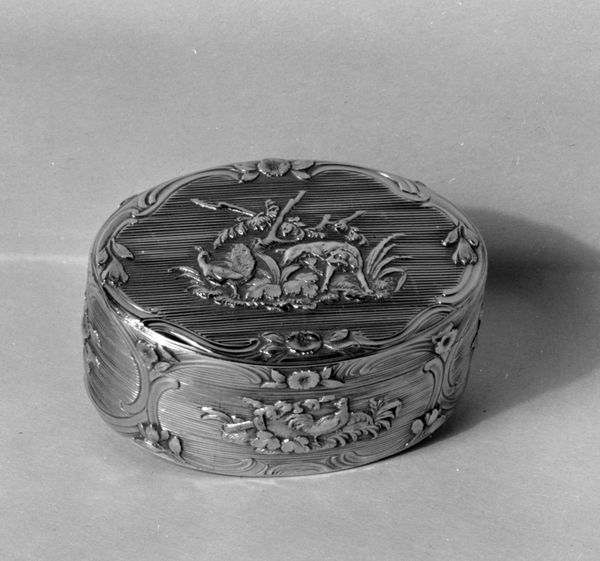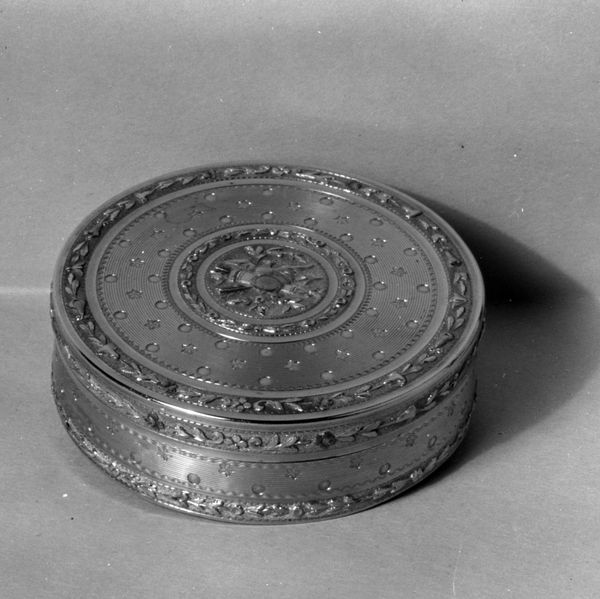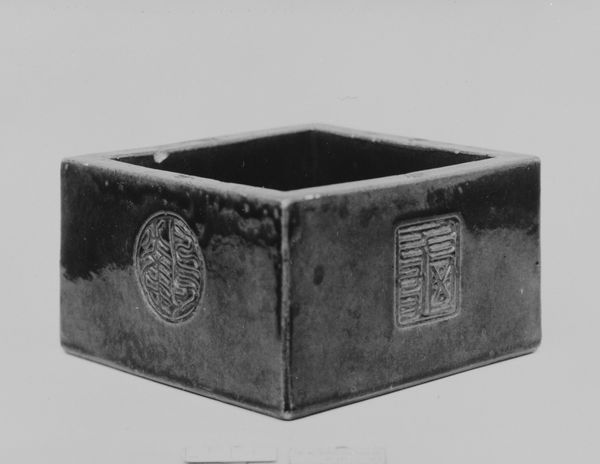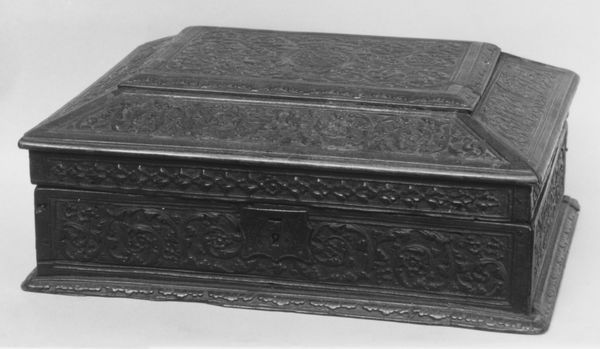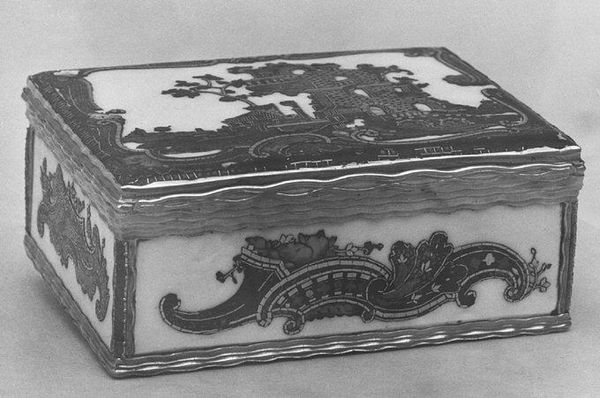
sculpture
#
sculpture
#
figuration
#
sculpture
#
decorative-art
#
rococo
Dimensions: 1 1/4 x 2 5/8 x 1 7/8 in. (3.2 x 6.7 x 4.8cm)
Copyright: Public Domain
Curator: Before us, we have a decorative Snuffbox, likely crafted between 1762 and 1763, residing here at the Metropolitan Museum of Art. Editor: My initial response is that this piece feels quite delicate, perhaps even a bit austere given the silver. It exudes formality; like powdered wigs and hushed drawing rooms. Curator: Precisely. Note how the artist, presumably Paul Robert, employed intricate chasing and repoussé techniques to achieve that very aura of refinement. The low relief sculptural panels exemplify the rococo style with those whimsical, flowing lines. Editor: But is it just ornamentation? Look closely at the narratives represented: figures engaged in leisurely domesticity, cherubic forms evoking innocence. Whose leisure, though? Whose innocence? Curator: Indeed, one cannot ignore the socio-political context. The luxury of snuff-taking, and by extension the snuffbox itself, was almost exclusively enjoyed by the aristocracy. Consider how such a commonplace object reinforces class distinctions through its material value and implied leisure. Editor: It begs the question: does the charm of the imagery ultimately obscure the more structural inequalities that such items propped up? How are we to appreciate this craftsmanship without a consideration of the historical weight it carries? Curator: While those larger questions undoubtedly inform our perception, let’s not diminish the craftsmanship on display. The formal organization here creates rhythm; it’s a little jewel-box, designed to delight. There’s a satisfying precision, even a purity in the lines despite its overtly ornamental function. Editor: I think both elements must hold space. To understand this object solely as a marker of wealth feels insufficient, just as ignoring the sociopolitical implications does. This object should push us to confront the art of its making, with consideration given to those both served, and failed by the social dynamics reflected within it. Curator: I’m quite content knowing that after our exchange, more can be learned from looking deeper at pieces like this, as both a composition and an object of culture. Editor: A shared awareness enables each patron a chance at true comprehension. Hopefully, through our discussion, people recognize themselves not just as viewers, but active participants in the continued life and conversation surrounding objects such as this.
Comments
No comments
Be the first to comment and join the conversation on the ultimate creative platform.
